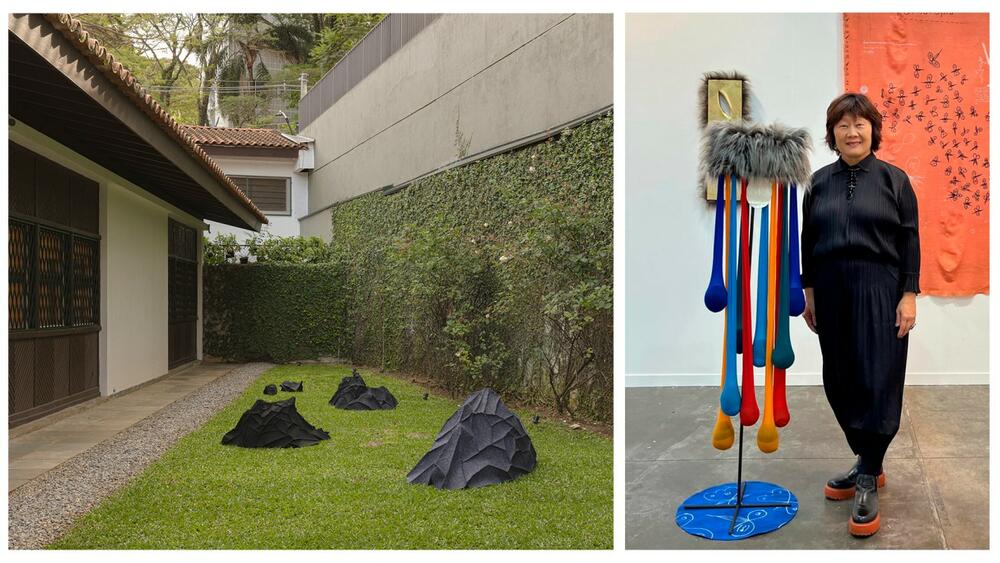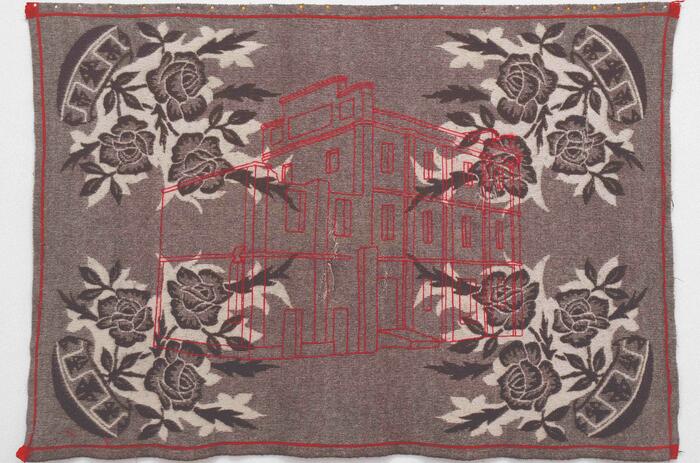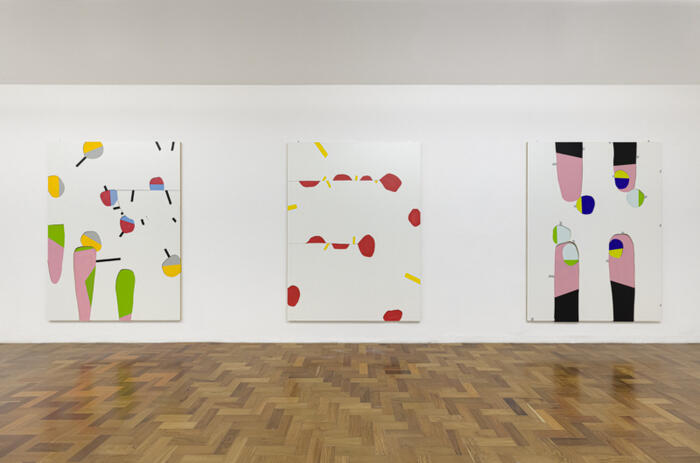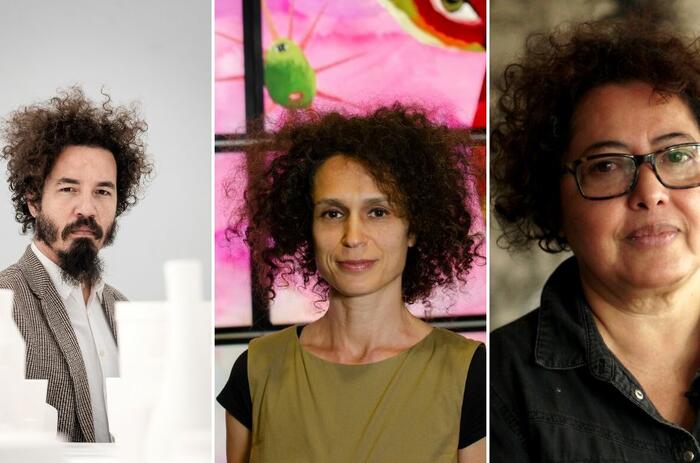INSIDE MARLI MATSUMOTO´S HOUSE/GALLERY IN VILA MADALENA, SÃO PAULO.
With the recent exhibition by Rosario López, Tapizar el Paisaje, Marli Matsumoto's gallery received and sheltered a strong artistic expression that, through apocalyptic tapestries and photographs of recent industrial history, tells the story of how the landscape is shaped, built or destroyed. In this interview, the founder of the gallery in São Paulo delves into the bases that gave life to the gallery and her interest in providing a space for young artists and experimental contemporary art.

Why did you choose a house as the location for your gallery? What was it about the domestic character of the space that inspired you to transform the house into a gallery?
It was a succession of events. This house, and not another, materialized the will to open a gallery, it was not the search for a domestic space, it was a coincidence. It was ideal for exhibitions and installations on a human scale and proportions, for close contact with works of art.
Built in the late 1950s, with modernist lines, a simplified plan, floor-to-ceiling glass walls and doors, the façade brings natural light and vegetation to the interior as well as natural lighting and greenery to the exterior.
What does an outdoor space hold that functions as an exhibition space?
At the opening, the artist Jarbas Lopes gave the gallery and its garden as a gift and even blessed it with the installation of his 2008 work Lona Coração, a huge heart in the center of a yellow canvas spread across its outdoor space.
The area outside the house has already been the scene of the performance/dance Corpo a Beira da Crise by the artist Élle de Bernardini, mixing her training as a classical dancer with the practice of Butoh. In the Cultivo exhibition, organized by the artist Raphaela Melsohn, the garden was occupied by beach chairs for the video sessions Quartzo, by João Simões, and Goodbye Snowball, by Rasel Ahmed. Last October, the artist Rosario López installed rocks or mountains that, according to the viewer, make up a kind of Japanese Zen garden.
What is the greatest differential of the gallery?
I value the exhibition program and, in addition to the individual shows of the represented artists, I like to invite curators and artist-curators to bring together the young Brazilian production on the one hand, with works by established Brazilian and foreign artists; reinforcing the intention to maintain collaborative works, in association with galleries and independent cultural projects.
The gallery also presents on the secondary market a selection of works of the highest quality and provenance, exclusively by artists I have personally worked with, such as Anna Maria Maiolino, Antonio Dias, Cildo Meireles, Lygia Pape and Mira Schendel. This segment, within the gallery space, speaks all the time with the production of young artists, in the sense of a foundation and historicity.
What do you take into account when choosing the samples that enter the gallery? Is there a selection criteria for artists and types of work?
Preference is given to projects by young artists or more experimental projects.
Being a house, the gallery allows for different experiences than a white cube. For example, I have invited the pioneering artist of the site specific in Brazil, Umberto Costa Barros (Rio de Janeiro, 1948), to develop a project for the gallery during the São Paulo Biennial, in August 2023. The curator will be Catherine Bompuis, great connoisseur of his work and who has accompanied him for many years. He is an artist who interferes directly in the exhibition space itself and his work is determined by the place. And he talks all the time about art.
What does the gallery bring to the artists that exhibit?
In addition to the space, the gallery offers support to the assembly, disseminates and promotes the exhibitions, introduces the artist's production to collectors and national and international institutions. Since its opening in August 2021, we have held 10 exhibitions and participated in 2 art fairs, SPArte and Arpa, and in 2023, in addition to the national ones, we will hold the first international fair, ZonaMACo, in Mexico, with a solo show by Élle de Bernardini.
About Tapizar el Paisaje:
What did it mean to you personally to host this exhibition in your gallery?
I have followed and admired the work of Rosario López for many years and I was very happy to bring the exhibition Upholster the Landscape, curated by Alexia Tala, to Brazil.
What did it mean for the gallery?
For the gallery, bringing this exhibition demonstrates its interest in creating dialogues with Latin American artists. Several meetings were organized with the artist and the curator, with the intention of publicizing her work, and the response was excellent and I believe that the exhibition has contributed and continues to contribute to the establishment of the gallery in the national and international market.
-
Marli Matsumoto. Founder of the gallery. Foto Ian Duarte.
-
Rosario López. Nueva Jerusalén. Intervenção em cobertor [intervention on blanket] 138 x 204 cm. From the exhibition “Tapizar el paisaje”. Courtesy Marli Matsumoto.
-
Gallery views of the exhibition “Tapizar el paisaje”. Courtesy Marli Matsumoto.
-
Gallery views of the exhibition “Untitled”. Courtesy Marli Matsumoto.
-
Gallery views of the exhibition “Fissura // Insquisição”. Courtesy Marli Matsumoto.
-
Gallery views of the exhibition “Tombo”. Courtesy Marli Matsumoto.
Tapizar el Paisaje exposes an ecological perspective and an ethical duty of care to the territory. Do you feel challenged by this speech? Do you feel a duty or social responsibility to give visibility to art that deals with this type of theme?
It is impossible not to relate the exhibition to the themes of ecology and territory, present in the work of Rosario López. These are issues that are debated worldwide in the most diverse fields and I see it as natural that they should be present in the gallery's exhibitions.
It is important to show young artists the political, social, ecological, racial and gender issues that are crucial to our contemporary times and are reflected in the works, but I am not looking for a specific theme; I am more interested in its intrinsic quality.






